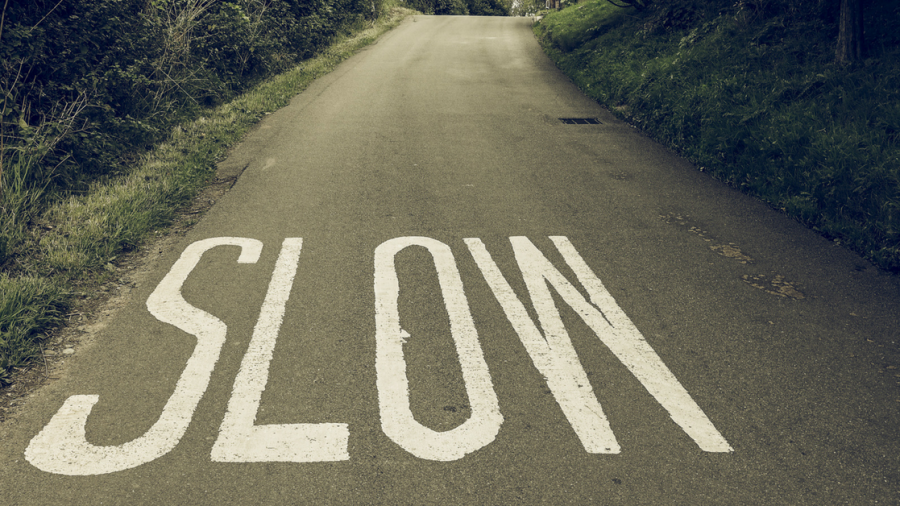When it comes to your driving speed in NSW, the only direction is down. More slow zones are coming. School zones are already 40kmh. Now the NSW government wants new 40kmh limits in high pedestrian areas like hospitals, train stations and shopping areas.
From September 2018, you must slow down to 40kmh when police, fire, ambulance, SES or rescue vehicles are flashing red or blue lights or stopped. Ignoring this incurs a $448 fine and three demerit points.
Slow zones are there to reduce the chance and severity of an accident. But is there any evidence slow zones of any kind actually stop us from speeding?
Slow zones
Yarra Council in Melbourne has just announced new 30kmh zones, even though more than 50% of residents opposed it. Recent UK statistics show motorists are more likely to speed when faced with low limits:
- 16% do more than 30mph on 20mph streets
- 53% exceed the maximum in 30mph areas
- 46% drive faster than 70mph on motorways
- 8% go over 60mph on single carriageway roads.
In fact, where UK councils had installed 20mph zones, seven of 13 areas saw an increase in rates of people killed or seriously injured. It is possible the locals began to feel safer in those zones and took less care. Department for Transport said 20mph zones “did not work in most areas” and even claimed drivers “don’t believe in them”.
Australian drivers may well have the same attitudes to school zones.
School zones
Centre for Road Safety Executive Director Bernard Carlon says speed surveys show 40kmh school zones continue to have the lowest rate of compliance. Only 40% of drivers drive within the school zone speed limit.
The way police enforce the rules suggests these drivers have poor attitudes and always intend to speed. But speeding is not always deliberate.
One study found any kind of interruption in the school zone can lead to “prospective memory error”. For example, a traffic light turning green in a school zone causes drivers to resume their usual speed, not the school zone speed. There are no cues to remind them this is a school zone. In fact, the study found drivers do slow down when given an immediate reminder.
Another problem with school zones is we may forget we’re in them because there are no children visible.
Prospective memory error can also apply during roadworks or when driving from rural to urban speed zones. Any kind of interruption, such as a green light, can start this cognitive process. However, these academic arguments don’t seem to have much effect on current law enforcement.
Speed awareness courses work (for a while)
The usual punishment for speeding is demerit points and a fine but speeding awareness courses may be more effective. Ipsos Mori analysed the records of 2.2 million UK motorists and found 1.4 million chose a speed awareness course while 192,000 took penalty points and a fine. It discovered:
- Participants are 23% less likely than those who took penalty points to be caught speeding in the six months after the course
- 21% of course sitters compared to 23% who take points reoffend within three years.
In other words, speeders do change their behaviour but eventually return to their usual habits.
The NRMA has called for a speed awareness course for drivers with a clean record who are caught speeding by 10 kmh or under. It would take the place of a $114 fine and one demerit point per three year cycle. Currently, drivers who keep reoffending must take the SAFE program. It runs over two days in a two-week period and costs $145 [check this].
Speed cameras might work
Speed cameras bring governments $1.1 billion each year. They don’t seem to reduce lives lost: up by 5.2% to 383 for the 12 months to end July 2018. But they may contribute to cutting the rate of serious injury:
- Severe injuries in 2017 are down 2.7% to 12,055 compared to 2016
- Rate is 153.4 per 100,000 population in 2017 compared to 160.1 per 100,000 in 2016
- 2017 rate of serious injury is the lowest in last 10 years except for 159.9 in 2015.
One problem with speed cameras is drivers spend too much time squinting at their speedometers and not enough time paying attention to their driving. Moreover, speed cameras have their limitations. For example, they cannot detect drug drivers, who are more likely than drunk drivers to be killed on the roads.
No regular training
We suspect there is a lot more to speeding than a group of rebellious motorists deciding to go over the limit.
In the battle against speeding, it is perhaps strange that nothing is being done to improve driver training. Authorities assume, once we pass the test as an adolescent, we know what we’re doing from then on. This is in spite of driving conditions changing markedly in the course of somebody’s driving life. School zone offences, for example, are a relatively recent addition to traffic laws. They are also potentially confusing during school holidays or on pupil-free days.
As more and more roads adopt low speeds, we may wonder why it’s worth driving at all.


your opinion matters: